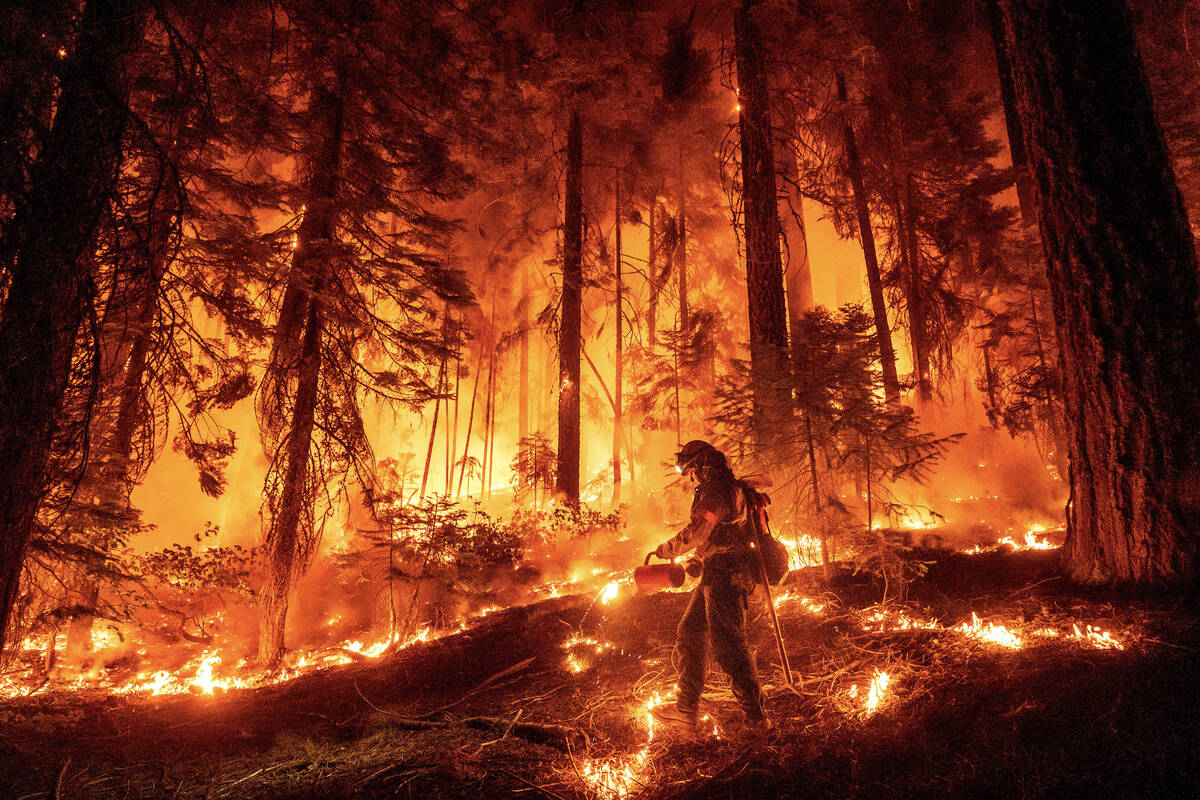EDITORIAL: Blame California — not global warming — for wildfires
Climate change is the political equivalent of a kid claiming, “A dog ate my homework.” It allows leaders to evade responsibility for what they can control.
On Wednesday, smoke covered the sky above Las Vegas. It obscured views of the Strip. It was so bad that the Clark County School District canceled nonessential outdoor activities. Air quality remained low on Thursday too.
It came from three wildfires burning in California, which have burned more than 100,000 acres combined. So far this year, around 1 million acres have burned there. This year’s fire season isn’t over yet. Much of that total came from the Park Fire, which started in July. It burned more than 425,000 acres.
It didn’t use to be like this. From 1950 to 1995, California didn’t have a single year in which 1 million acres burned. Now, it’s a regular occurrence. From 2017 to 2021, California had more than 1 million acres burn in a year four times. That includes a staggering 4.3 million acres burned in 2020.
California officials blame global warming for this.
“In western U.S. forests, increases in temperature and vapor pressure deficit linked to anthropogenic climate change significantly enhanced fuel aridity over the past several decades, allowing for a more favorable fire environment,” a 2022 California report titled, “Indicators of Climate Change in California,” said.
Even if you think humans can control the weather, global warming is a global phenomenon. California could ban gas-powered cars, fossil fuel power and cows tomorrow, it wouldn’t significantly or immediately change the temperature. Remember: China is still building carbon-spewing coal power plants.
If global warming is the only factor, there isn’t a good solution here. But there are other variables. The most important is how people adapt to the ever-changing world. Here’s where California has room for improvement.
“In California, decades of fire suppression policies have exacerbated the issue, leaving behind overgrown thickets of vegetation,” The New York Times reported in August. “Much of the area in the Park Fire’s path, for example, hadn’t been burned for decades or longer, said Taylor Nilsson, the director of Butte County’s Fire Safe Council.”
California’s talked about doing this for years. In 2018, then-Gov. Jerry Brown signed an executive order directing the state to treat 500,000 acres of forestland annually within five years. Treatment includes prescribed fire and fuel reduction. Last year, however, Cal Fire treated less than 110,000 acres.
What California officials need to change isn’t the climate but their own ineptitude and mismanagement.

















